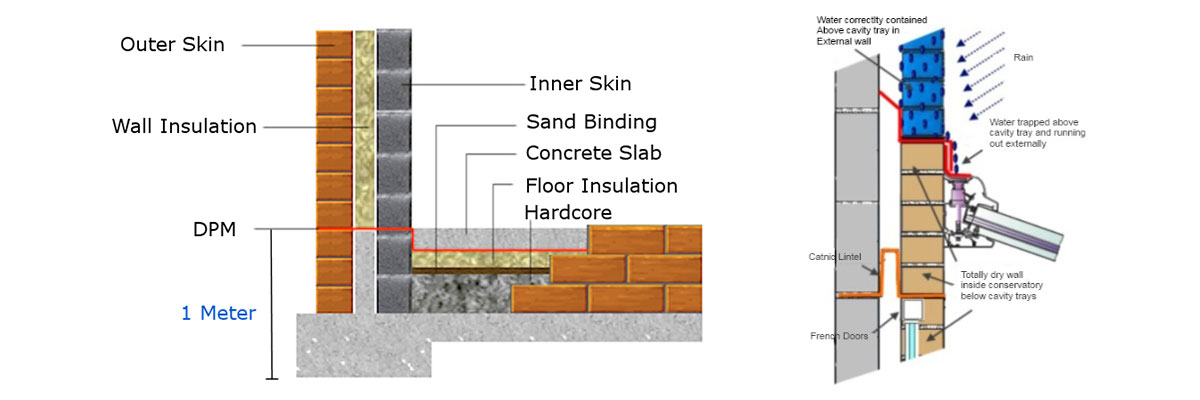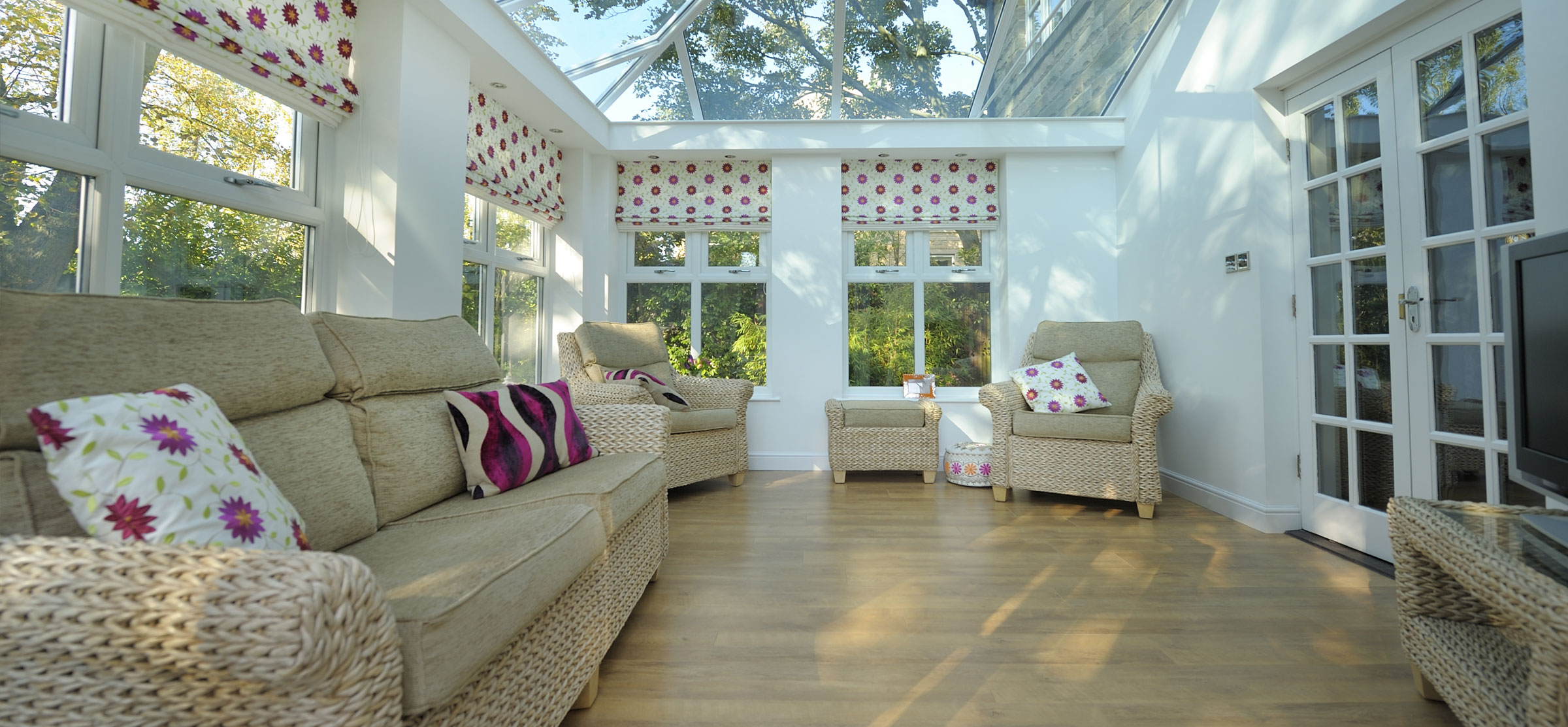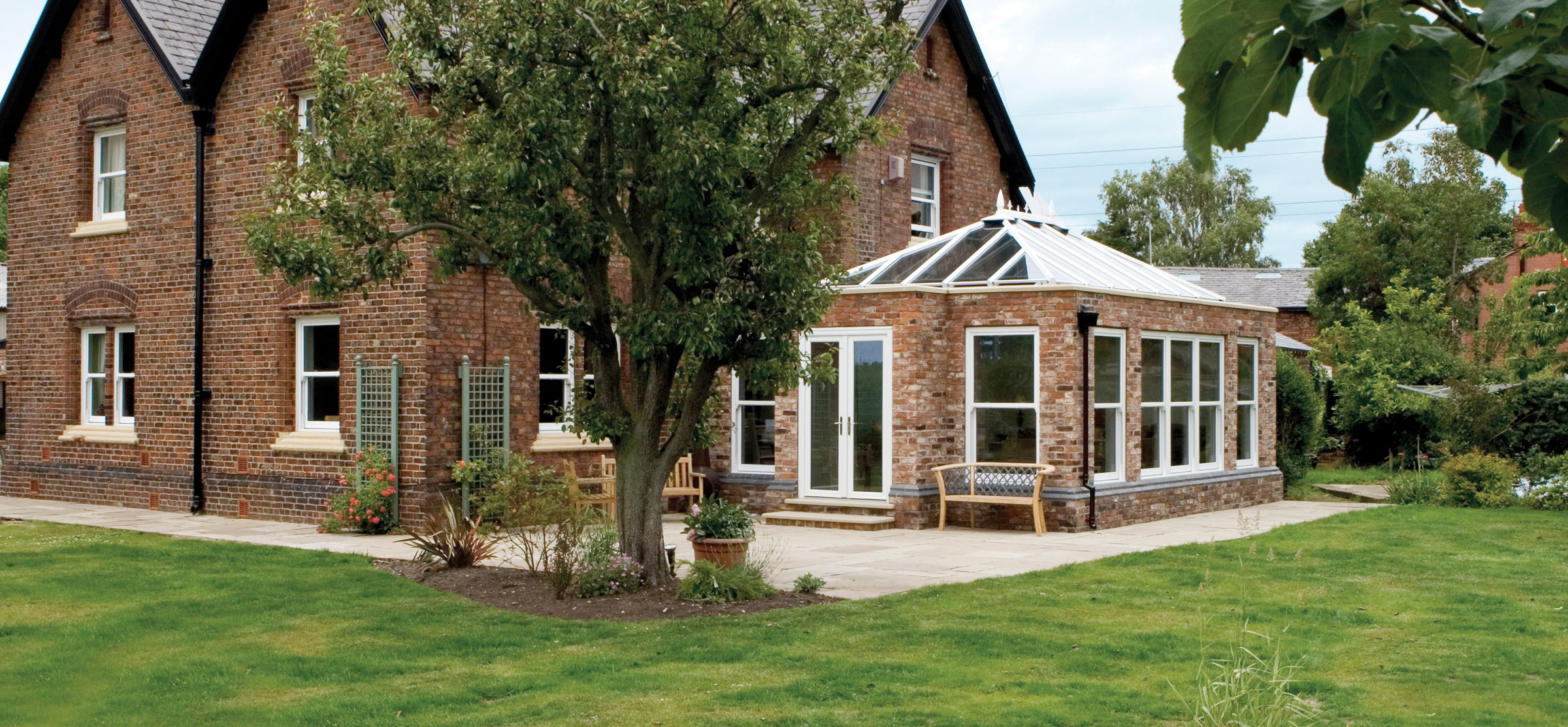Site Clearance
On arrival at your house, the builder’s first job is to clear the site of the conservatory. All we ask of you the customer is that any plants or shrubs you wish to keep are removed, and that existing conservatories have electricity made safe prior to their arrival. The builders will then remove the remaining foliage and take up existing patios (these can be stacked to one side for use later on).
Foundations
A conservatory is only as good as the footings below. To this end the builder will dig footings to a depth of between two and three feet (depending on soil conditions). These will be filled with a strong mix of concrete and blocked up to ground level. Any pipework if uncovered will be lintled for support. Brickwork to match your house will then be carried out to bring the floor level up to the agreed height. (Usually the same height as your existing floor)

Brickwork
Standard construction of our dwarf walls is cavity brickwork with facing brickwork on the inside and outside. It is possible to specify plastered internal and/or external walls. The bricks we use are Hanson and Ibstock bricks, and you will be offered a choice from their massive range. Squint bricks (bent bricks) are used on all external Victorian corners. The builder will also fit both vertical and horizontal DPCs to the brickwork; this eliminates damp bridging the house DPC. All our cavity walls are topped with either bull nosed quarry tiles, mdf(similar to wood), or anti scratch plastic cills. If specified power points our fitted into the brickwork and the wiring hidden in the cavity.
Over-site & floor
The floor is constructed in two separate stages. Firstly scalpings are placed on the base, this is the base’s hard-core, then a layer of fine grit or sharp sand is used to cover all the sharp edges before a polythene membrane is placed into the base and lapped all the way up to tie in with the horizontal DPC in the conservatory brickwork. Any airbricks on the back of your house are piped through to maintain the airflow. Jablite compressed polystyrene insulation is placed in the floor. Finally a float screed floor is placed on top, this is usually 150mm thick and the finished floor is perfectly flat, ready for tiling or carpets etc.
Special Conditions
If you specify the re-inforced base the footing depth is increased to 1m and steel is inserted into the concrete and then tied into the existing house footings. The over-site will also have an increased depth and a steel mesh inserted into the floor. Brickwork up to DPC is tied into the house brickwork. A cavity tray can be fitted into the house brickwork and this tied into the conservatory lead work.
General
Normally building work is not a nice process, with mess and days wasted waiting for people to turn up. We, however are different. Cleanliness and efficiency are very important to us, as is the genuine pride that the builders take in their work. At the end of the job everything is removed and the site left spotless.
Installation Specifications
When the conservatory is delivered to your home, it will be off-loaded and checked by one of our staff who will place the components safely ready for the installers. On arrival the installers will install the conservatory on the prepared base. The installers use lead flashing to secure the ridge of the conservatory. This either is stepped for Victorian conservatories or straight for lean-to styles. Cavity trays can be specified as an extra. On completion of the installation, the installers will be spend time cleaning the conservatory with specialist cleaners to ensure that when you are presented with your keys, the conservatory is absolutely sparkling.



